Çanakkale Battles...
The story started with two huge German warships, Goben and Breslaw.
At the time the winds of World War I were blowing and the Ottoman Empire
was not involved yet until these two ships, Globen and Breslaw, escaped
from the British Navy and stopped in front of Dardenels. The names of these
two ships were replaced with Turkish names, Midilli and Yavuz. A few days
later, these ships sailed from Istanbul and bombed Russian Harbours on
the Black Sea shores. As a result, the Ottaman Empire entered into World
War I. Five days later, a huge navy consisting of England, France, and
their allies, attacked the straits. This was the beginning of their end
but who could know the reality.
Let's go back to the story again. The joining of the Ottoman Empire
into World War I wasn't a coincidence. This was a part of a well planned
game by both sides of World War I. At the time, Russia wasn't in good condition
and the Ottoman Empire had Dardanelles and Bosphoroas. These straits between
the Black Sea and the Mediterian Sea were one of the obstacles in reaching
Russia for its allies, England and France. On the other hand, Germany needed
greatly to change the direction of the war. If the Ottoman Empire entered
the war, their load would be decreased. Allies didn't pass from the straits
by beating the Ottaman Army , but at the end of the war, the Ottoman Empire
was on the losing side. Allies passed from the straits without fighting
and occupied Istanbul, and then they started to share the land of the Ottoman
Empire under the preplanned treaty.
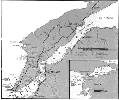 On August 10, 1914, Goben and Breslaw anchored at the entrance of Canakkale
Straits. After long conversation, the Ottoman Empire accepted these two
ships and announced that they were bought from Germany and included in
the Ottoman Navy. At that time, British and French ships came in front
of the strait and waited for the return of the German ships. After the
announcement, there was nothing to do for them. The names of German ships
and the uniforms of soldiers were changed. These war ships came to Istanbul
by carrying the flag of the Ottoman Empire.
On October 27, 1914, somehow these two ships sailed to the Black Sea
and on October 29, attacked the Russian Harbours of Odesa, Navroski, and
Sivastopal for two days. Russia declared a war without waiting for an explanation
from the Ottoman Empire. This attack was planned by General Enver who was
under the of German pressure. He was the leader of the political party
of "Ittihat veTerakki" , the millitary affairs of the Ottoman Empire, and
was the person that initiated the end of the Ottoman Empire. Essentially
Britain, France, and their allies had blocked the Canakkale strait after
the entrance of German ships into the strait. Four days later, Britain
and France declared war and a few days later (November 3) they bombed the
guns at the entrance of the strait (Sebdulbahir) and caused more damage.
The Ottoman Empire replied with their declaration of war.
Gallipoli wars can be examined in two phases; sea wars and land wars. We will begin with sea
wars. After the first bombardment, until March 18, 1915, the strait forts
were bombed many times. According to sources, 11 attacks were made and
each of them continued for days. The entrance forts were closed after the
first three attacks. Then they bombed the other forts inside of the straits.
The Ottoman forces had almost 100-150 guns at 40 bases for 247 cannons
of the ally ships. In addition to ground bases, the straits had been mined.
Until the end of the war, approximately 610 mines were set into the deep
water of the strait. And two underwater nets againts the submarines had
been set, one of them was between Karanfil point and Akyarlar, the other
one was infront of Nara Point. On March 18, 1915, the enemies attempted
a final attack. They would pass from Canakkale Strait and occupy Istanbul.
The Turkish side was expecting a such an attempt. Outside forts were already
stopped on August 25 attack. English admiral belived that inside forts
were destroyed under the heavy bombing of the navy but they were wrong.
On August 10, 1914, Goben and Breslaw anchored at the entrance of Canakkale
Straits. After long conversation, the Ottoman Empire accepted these two
ships and announced that they were bought from Germany and included in
the Ottoman Navy. At that time, British and French ships came in front
of the strait and waited for the return of the German ships. After the
announcement, there was nothing to do for them. The names of German ships
and the uniforms of soldiers were changed. These war ships came to Istanbul
by carrying the flag of the Ottoman Empire.
On October 27, 1914, somehow these two ships sailed to the Black Sea
and on October 29, attacked the Russian Harbours of Odesa, Navroski, and
Sivastopal for two days. Russia declared a war without waiting for an explanation
from the Ottoman Empire. This attack was planned by General Enver who was
under the of German pressure. He was the leader of the political party
of "Ittihat veTerakki" , the millitary affairs of the Ottoman Empire, and
was the person that initiated the end of the Ottoman Empire. Essentially
Britain, France, and their allies had blocked the Canakkale strait after
the entrance of German ships into the strait. Four days later, Britain
and France declared war and a few days later (November 3) they bombed the
guns at the entrance of the strait (Sebdulbahir) and caused more damage.
The Ottoman Empire replied with their declaration of war.
Gallipoli wars can be examined in two phases; sea wars and land wars. We will begin with sea
wars. After the first bombardment, until March 18, 1915, the strait forts
were bombed many times. According to sources, 11 attacks were made and
each of them continued for days. The entrance forts were closed after the
first three attacks. Then they bombed the other forts inside of the straits.
The Ottoman forces had almost 100-150 guns at 40 bases for 247 cannons
of the ally ships. In addition to ground bases, the straits had been mined.
Until the end of the war, approximately 610 mines were set into the deep
water of the strait. And two underwater nets againts the submarines had
been set, one of them was between Karanfil point and Akyarlar, the other
one was infront of Nara Point. On March 18, 1915, the enemies attempted
a final attack. They would pass from Canakkale Strait and occupy Istanbul.
The Turkish side was expecting a such an attempt. Outside forts were already
stopped on August 25 attack. English admiral belived that inside forts
were destroyed under the heavy bombing of the navy but they were wrong.
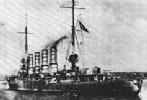
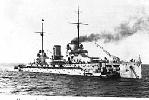 Admiral Robeck divided his navy into three parts. first group consisted
of Queen Elizabeth, Agamemnon, Lord Nelson, Inflexible, Triumphe (English
battleships). The second group of Albion, Irresistable, Wangeance, Switsure,
Majestic, Prince George, Ocean, Corn Wallis (English battleships). At the
third group consists of Bouvet, Gaulois, Souffren, Charmagne, Canopous
(French battleships). The attacks were planned in four phases. The first
and second groups would enter the strait and destroy the inside forts and
clear the mines in the entrance of the strait. The second phase French
battleships would join the first and second groups. In the third phase,
French battleships would pass the English battleships, move forward and
pass the strait. Fortunately during the last phase, Istanbul would be occupied.
Canakkale strait had a different feature. At the entrance of the strait,
there were four main forts; Sebdulbahir fort on the Europe side and Kumkale,
Orhaniye and Ertugrul forts on the Asia side. After this the strait widened
and in the middle of the straits it norrowed. Here Kilitbahir fort was
on the Europe side and Hamidiye on the Asia side. These two step defense
lines protect the strait. These forts had many guns along the shore, and
between these there were several small forts.
On March 18, 1915 at 11:10 am, the attack started. The first and second
English battleships entered the strait and started to bomb the forts inside
of the strait. Before this, mine-search ships had entered the strait but
three of them were destroyed by the shore guns, others escaped. It was
risky for the battleships to continue the fight. The Ottaman's fort guns
returned their fires. This attack wasn't effective. Allies were confused
because of the fires from the forts that were thought completely destroyed.
Powerful English and French battleships decided to go forward without searching
for mines. Then French battleships entered the strait and stopped five
mile away from the English battleships. Mesudiye, Dardanos, and Kepez forts
were at the range of their guns. The day was hell. Many guns were firing
at each other.The surface of the strait was covered with water fountains.
Many places on land and over the battleships were on fire.
Admiral Robeck divided his navy into three parts. first group consisted
of Queen Elizabeth, Agamemnon, Lord Nelson, Inflexible, Triumphe (English
battleships). The second group of Albion, Irresistable, Wangeance, Switsure,
Majestic, Prince George, Ocean, Corn Wallis (English battleships). At the
third group consists of Bouvet, Gaulois, Souffren, Charmagne, Canopous
(French battleships). The attacks were planned in four phases. The first
and second groups would enter the strait and destroy the inside forts and
clear the mines in the entrance of the strait. The second phase French
battleships would join the first and second groups. In the third phase,
French battleships would pass the English battleships, move forward and
pass the strait. Fortunately during the last phase, Istanbul would be occupied.
Canakkale strait had a different feature. At the entrance of the strait,
there were four main forts; Sebdulbahir fort on the Europe side and Kumkale,
Orhaniye and Ertugrul forts on the Asia side. After this the strait widened
and in the middle of the straits it norrowed. Here Kilitbahir fort was
on the Europe side and Hamidiye on the Asia side. These two step defense
lines protect the strait. These forts had many guns along the shore, and
between these there were several small forts.
On March 18, 1915 at 11:10 am, the attack started. The first and second
English battleships entered the strait and started to bomb the forts inside
of the strait. Before this, mine-search ships had entered the strait but
three of them were destroyed by the shore guns, others escaped. It was
risky for the battleships to continue the fight. The Ottaman's fort guns
returned their fires. This attack wasn't effective. Allies were confused
because of the fires from the forts that were thought completely destroyed.
Powerful English and French battleships decided to go forward without searching
for mines. Then French battleships entered the strait and stopped five
mile away from the English battleships. Mesudiye, Dardanos, and Kepez forts
were at the range of their guns. The day was hell. Many guns were firing
at each other.The surface of the strait was covered with water fountains.
Many places on land and over the battleships were on fire.
 Then French battleships began moving to take place infront of the navy.
Everything happened at that moment; Bouvet hit one of the mines, and it
sunk immediately. The shock spread over allies, because all mines had been
cleaned before at this area. But who would know that Nusret, the Turkish
mine ship, had mined the same area after their cleaning operation. Irresistible
and Ocean wanted to help Bouvet but because of the mines and heavy fire
from the shore, they were wounded. After a few minutes these two enormous
battleships were lost in the cold water of the strait. On the other hand,
Gaulois, Souffren, Agamemnon, Albion, Inflexible, and Charlmange were in
a very bad situation and getting worse. At the receding maneuver, Gaulois
and Souffren hit the mines. Enemies lost half of their navy. Turkish forces
lost 3 guns, 44 martyrs, and had 70 wounded soldiers. Passing from the
strait with battleships was impossible for the allies. They finally realized
the fact that Canakkale strait can not be crossed through. After that the
land fights would begin.
From March 18 to April 25, the allies prepared to land at Gallipolli
pennisula. Three landings were done at Kumkale, Saros Gulf, and Besige
Harbour. These were made to mislead Turkish forces and to hide the main
target. Liman Von Sanders, genaral of the strait forces, had a different
plan. he thought the target was Bolayir -the most narrow neck of the pennisula
respectively, and he believed that Turkish forces couldn't stop the enemy
at the shore. They could be stopped at the upper side of the shores. This
thought was completely wrong. Therefore, the battle was too bloody and
long.
The allies had three targets: Seddulbahir, the first point of the pennisula,
Ariburnu and Kabatepe ( known today as Anzak Cove ), and Sugla (Suvla) Bay.
The first two landings were done on April 25, 1915. The last one
was on August 8, 1915.
Then French battleships began moving to take place infront of the navy.
Everything happened at that moment; Bouvet hit one of the mines, and it
sunk immediately. The shock spread over allies, because all mines had been
cleaned before at this area. But who would know that Nusret, the Turkish
mine ship, had mined the same area after their cleaning operation. Irresistible
and Ocean wanted to help Bouvet but because of the mines and heavy fire
from the shore, they were wounded. After a few minutes these two enormous
battleships were lost in the cold water of the strait. On the other hand,
Gaulois, Souffren, Agamemnon, Albion, Inflexible, and Charlmange were in
a very bad situation and getting worse. At the receding maneuver, Gaulois
and Souffren hit the mines. Enemies lost half of their navy. Turkish forces
lost 3 guns, 44 martyrs, and had 70 wounded soldiers. Passing from the
strait with battleships was impossible for the allies. They finally realized
the fact that Canakkale strait can not be crossed through. After that the
land fights would begin.
From March 18 to April 25, the allies prepared to land at Gallipolli
pennisula. Three landings were done at Kumkale, Saros Gulf, and Besige
Harbour. These were made to mislead Turkish forces and to hide the main
target. Liman Von Sanders, genaral of the strait forces, had a different
plan. he thought the target was Bolayir -the most narrow neck of the pennisula
respectively, and he believed that Turkish forces couldn't stop the enemy
at the shore. They could be stopped at the upper side of the shores. This
thought was completely wrong. Therefore, the battle was too bloody and
long.
The allies had three targets: Seddulbahir, the first point of the pennisula,
Ariburnu and Kabatepe ( known today as Anzak Cove ), and Sugla (Suvla) Bay.
The first two landings were done on April 25, 1915. The last one
was on August 8, 1915.
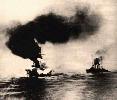
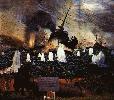 At midnight, clock was showing 2 am. A few battle ships were infront
of "Kaba tepe" and "Ari Burnu" shores. Almost 1500 armed Australian sailed
from the battleship to the shores. None of them knew what could happened.
They came from far from these land for their colonists. The travel to the
unknown shores was quite.
When they were close to the shores 3 hundred yards, there was still
no sound. Then suddenly, a fire was increased from the cliffs to the sky.
Everbody knew what this means. The men jumped from the boats and began
to reach to the shores. Under heavy fire, some were shot, some drowned
because of their heavy packs, and a few of them could reach the shores.
The Anzac legend had began. Unexpecttedly this wasn't a beach, cliffs were
standing infront of them as an obstacle. The fire came from the hills to
down yard like a rain. Their situation were hopeless. Shots and cries had
filled the air.
When the sun raised, they understood where they were. The sunrise showed
that they were not on the Kabatepe beach. The current last night had swept
them a mile north of the main target. Now they stuck in a norrow beach
between the sea and the sharp cliffs. The trops had spread over the beach.
Some groups of Australian had panetrated in land for a mile or more, but
most of them were still on the beach among the rocks and the scrub of the
ravines. The situation of the Turkish trops on the hills were the same
as much as the Dominions.
At midnight, clock was showing 2 am. A few battle ships were infront
of "Kaba tepe" and "Ari Burnu" shores. Almost 1500 armed Australian sailed
from the battleship to the shores. None of them knew what could happened.
They came from far from these land for their colonists. The travel to the
unknown shores was quite.
When they were close to the shores 3 hundred yards, there was still
no sound. Then suddenly, a fire was increased from the cliffs to the sky.
Everbody knew what this means. The men jumped from the boats and began
to reach to the shores. Under heavy fire, some were shot, some drowned
because of their heavy packs, and a few of them could reach the shores.
The Anzac legend had began. Unexpecttedly this wasn't a beach, cliffs were
standing infront of them as an obstacle. The fire came from the hills to
down yard like a rain. Their situation were hopeless. Shots and cries had
filled the air.
When the sun raised, they understood where they were. The sunrise showed
that they were not on the Kabatepe beach. The current last night had swept
them a mile north of the main target. Now they stuck in a norrow beach
between the sea and the sharp cliffs. The trops had spread over the beach.
Some groups of Australian had panetrated in land for a mile or more, but
most of them were still on the beach among the rocks and the scrub of the
ravines. The situation of the Turkish trops on the hills were the same
as much as the Dominions.
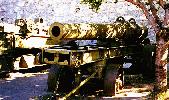
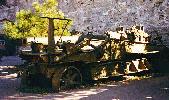 By 7 am. one officer with his two scouts had succeeded to reach first
three ridges on the coast. They could see the calm water of straits. The
other group was very close to peak of Chunuk Bair as much as a half mile
and there was no defense seen on the hills. The fair and hopelessness were
gone and instead a string belief took place on Anzac trops. In a few minutes,
officer gathered their trops and began to march through the hills.
They would be succesfull, they could be. One of the Turkish commander
just received the information that the Anzac trops had landed on Ariburnu
beach. He was standing with his division at the behind of defence line
as a reserve unit. At 6.30 he received an order to stop the Anzack attack.
Immediately he moved to stop this attack. The march was slow and the time
was flowing. The area was also unknown for Turkish. The two quides were
lost, Turkish officer found his way with his own ability. Because of long
walk, he left his division for rest. When he reached the hills, he saw
the battle ships and the transports in the sea. The worse thing was there
was no defense infront of the Anzak trops. When he reached the slope of
Chunuk Bair, he met a party of Turkish soldiers. They were running back
and the enemy was close to the hills. He sent his officers to bring his
division to the battle field. He stoped the Turkish soldiers and asked
them why they were running. The answer was quite simple: "Sir the enemy"
pointing down the hill. He ordered them to fight but they protested because
they had no ammunition.
This was the most critical situation of the Galipoli war. He ordered
again and forced them to fix their bayonets and lie down in a line. When
the enemy saw their defence motion, they also stoped. In his report, the
moment that they gained and changed the destiny of the war. He knew that
his division and the other support groups could not stop more than 6 thousand
soldiers. With his division and other units he started the fire. He immediately
realized the situation of the war and arranged his units against this.
He also ordered other officer to attend the war to stop the Anzak trops.
His words are well know in our history because these words are missunderstood :
"I don't order you to attack, I order you to die. In the time which passes
until we die other trops and commanders can take our place."
This young commander was the founder of modern Turkiye and his name is Mustafa
Kemal. This was the epic of 57th Turkish Regiment. There was nobody left
from this unit after the fight.They all died for Turkish land.
By 7 am. one officer with his two scouts had succeeded to reach first
three ridges on the coast. They could see the calm water of straits. The
other group was very close to peak of Chunuk Bair as much as a half mile
and there was no defense seen on the hills. The fair and hopelessness were
gone and instead a string belief took place on Anzac trops. In a few minutes,
officer gathered their trops and began to march through the hills.
They would be succesfull, they could be. One of the Turkish commander
just received the information that the Anzac trops had landed on Ariburnu
beach. He was standing with his division at the behind of defence line
as a reserve unit. At 6.30 he received an order to stop the Anzack attack.
Immediately he moved to stop this attack. The march was slow and the time
was flowing. The area was also unknown for Turkish. The two quides were
lost, Turkish officer found his way with his own ability. Because of long
walk, he left his division for rest. When he reached the hills, he saw
the battle ships and the transports in the sea. The worse thing was there
was no defense infront of the Anzak trops. When he reached the slope of
Chunuk Bair, he met a party of Turkish soldiers. They were running back
and the enemy was close to the hills. He sent his officers to bring his
division to the battle field. He stoped the Turkish soldiers and asked
them why they were running. The answer was quite simple: "Sir the enemy"
pointing down the hill. He ordered them to fight but they protested because
they had no ammunition.
This was the most critical situation of the Galipoli war. He ordered
again and forced them to fix their bayonets and lie down in a line. When
the enemy saw their defence motion, they also stoped. In his report, the
moment that they gained and changed the destiny of the war. He knew that
his division and the other support groups could not stop more than 6 thousand
soldiers. With his division and other units he started the fire. He immediately
realized the situation of the war and arranged his units against this.
He also ordered other officer to attend the war to stop the Anzak trops.
His words are well know in our history because these words are missunderstood :
"I don't order you to attack, I order you to die. In the time which passes
until we die other trops and commanders can take our place."
This young commander was the founder of modern Turkiye and his name is Mustafa
Kemal. This was the epic of 57th Turkish Regiment. There was nobody left
from this unit after the fight.They all died for Turkish land.
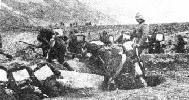 At the same time there was another fight on Seddulbahir beach and they
were not lucky as much as Anzak trops. This was the second story of the
landing. Battles at Cape Helles: Under General Hamilton, 5 separete landing
were done to toe of penisula. This place was proper for landing and a perfect
target for the naval guns. The right of the 300 yard wide cove, there were
a ruined fortress and a village. Both two were a natural shelter for landers.
This area had been searched many times.
At early morning, the village and the landing areas were bombed by the
tramendeus naval warships. There was no reply from the shore. At night,
River Clyde - a midsize soldier ship with twenty small boats had began
to travel through the shore. The current of strait was giving more trouble
to these foreigner. According to plan of General Hamilton, River Clyde
would be landed to the shore and the soldiers would go shore. When the
River Clyde grounded the shore, the first boat was a few yards far from
the shore. There was unnatural silent around the shore. Suddenly a fire
burst from the shore. It was unexpected for Allies. After many times bombardment,
deah or demorilezed Turks came back their trenches and firing as a rain
to Allies. This was the beach the Marines had walked safety two months
before.
The men were strugling in the boats. Some of them had jumped into the
water and reached the shelter of a little bank on the beach. They weren't
moving under the storm of bullets. Men were tired immediately died. A sailor
had landed his boad to the shore, realized that the passengers all were
death in his boat. Everybody had the same situation. The others died in
the boats shoulder to shoulder. Almost all died from the boats, only the
men in the River Clyde were secure. Many times the soldiers had tried to
get out from the bridges both side of the ship to land on the beach, but
each attempt was more blody than the previous one. Their situation were
hopeless. Air commander Samson were flying over Seddulbahir at that moment.
He saw that the sea was absulately red with blood intead of blue. This
was horrible sight to see for everybody.
At the same time there was another fight on Seddulbahir beach and they
were not lucky as much as Anzak trops. This was the second story of the
landing. Battles at Cape Helles: Under General Hamilton, 5 separete landing
were done to toe of penisula. This place was proper for landing and a perfect
target for the naval guns. The right of the 300 yard wide cove, there were
a ruined fortress and a village. Both two were a natural shelter for landers.
This area had been searched many times.
At early morning, the village and the landing areas were bombed by the
tramendeus naval warships. There was no reply from the shore. At night,
River Clyde - a midsize soldier ship with twenty small boats had began
to travel through the shore. The current of strait was giving more trouble
to these foreigner. According to plan of General Hamilton, River Clyde
would be landed to the shore and the soldiers would go shore. When the
River Clyde grounded the shore, the first boat was a few yards far from
the shore. There was unnatural silent around the shore. Suddenly a fire
burst from the shore. It was unexpected for Allies. After many times bombardment,
deah or demorilezed Turks came back their trenches and firing as a rain
to Allies. This was the beach the Marines had walked safety two months
before.
The men were strugling in the boats. Some of them had jumped into the
water and reached the shelter of a little bank on the beach. They weren't
moving under the storm of bullets. Men were tired immediately died. A sailor
had landed his boad to the shore, realized that the passengers all were
death in his boat. Everybody had the same situation. The others died in
the boats shoulder to shoulder. Almost all died from the boats, only the
men in the River Clyde were secure. Many times the soldiers had tried to
get out from the bridges both side of the ship to land on the beach, but
each attempt was more blody than the previous one. Their situation were
hopeless. Air commander Samson were flying over Seddulbahir at that moment.
He saw that the sea was absulately red with blood intead of blue. This
was horrible sight to see for everybody.
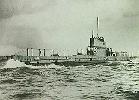
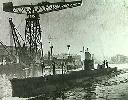 General Hunter - Weston knew nothing about what was happening on the
beach at cruiser Euryalus all this time. He sent the main body of the trops
in the great misunderstanding. This was the massacre for them. At the other
landing places, four landing had been going forward. they got much better
success. Under the heavy fighting near the Tekke Point, about 1 mile far
from the Cape Helles, considerable numbers of soldiers were on two landing
place at "Eski Hisarlik"and "Tekke Point". What could be thought about
the men on the western side of penisula for fifth landing place. This landing
had been prepared for a trap. However nobody had reliazed that there were
2000 men there even Turks. They had their morning breakfast and tea without
any defence. They knew nothing about what was going on at the Cape Helles
beaches. The commander of this trop had no order to go forward. This pleasure
time continued until they were relized. If they have moved forward, they
would have changed the destiny of the war by encircling the equal Turks
with themselves in numbers. If they did, they might have turned a masacre
into a brilliant victory.
After the first landing on April 28, 1915 Org. Hamiltan ordered to attack
to Kirte Hill (Alcitepe) at Capa Helles (Sebdulbahir). English trops under
the navy guns attacked the right side of penisula but they were stoped
and pushed back. Then Turkish attackes started on May 1, and continue until
May 2, to push the enemy to the sea. In spite of heavy lost, Turks didn't
move them. The power of navy guns was the reason for this failure. Having
reinforcement from Egypt, Hamiltan ordered another attack towards the Turks
on May 6 and continued two days until May 8. English and France trops strengthed
by Indian trops and 2 ANZAK trops were taken back from Ariburnu landing,
tried to break Turkish defense infront of the penisula. They didn't succeed
very much but they were able to occupy a piece of land at Krithia (Kerevizdere).Both
sides lost many lives during these attacks.
Dreaming of a great victory, High ranked Turkish officer, Enver Pasha,
ordered an attack on ANZAKs. Turkish opposite attack started on May 19
and failed. Unnumbered attacks were stoped each time. Under the heavy enemy
fire, Turkish soldiers were dying before reaching enemy treches or a few
who were able to reach the trenches, were loosing their lives after the
hand to hand fight. Then ANZAKs realized that Turks were brave fighters
which were completly different than what was told to them. First time an
armitice were accepted and both sides Turks and ANZAKs met each other.
It was a beginning of close releation with respect. It was significant
that ANZAKs refused to use gas masks later, believing that Turks were fair
soldiers. Yes they were ..
General Hunter - Weston knew nothing about what was happening on the
beach at cruiser Euryalus all this time. He sent the main body of the trops
in the great misunderstanding. This was the massacre for them. At the other
landing places, four landing had been going forward. they got much better
success. Under the heavy fighting near the Tekke Point, about 1 mile far
from the Cape Helles, considerable numbers of soldiers were on two landing
place at "Eski Hisarlik"and "Tekke Point". What could be thought about
the men on the western side of penisula for fifth landing place. This landing
had been prepared for a trap. However nobody had reliazed that there were
2000 men there even Turks. They had their morning breakfast and tea without
any defence. They knew nothing about what was going on at the Cape Helles
beaches. The commander of this trop had no order to go forward. This pleasure
time continued until they were relized. If they have moved forward, they
would have changed the destiny of the war by encircling the equal Turks
with themselves in numbers. If they did, they might have turned a masacre
into a brilliant victory.
After the first landing on April 28, 1915 Org. Hamiltan ordered to attack
to Kirte Hill (Alcitepe) at Capa Helles (Sebdulbahir). English trops under
the navy guns attacked the right side of penisula but they were stoped
and pushed back. Then Turkish attackes started on May 1, and continue until
May 2, to push the enemy to the sea. In spite of heavy lost, Turks didn't
move them. The power of navy guns was the reason for this failure. Having
reinforcement from Egypt, Hamiltan ordered another attack towards the Turks
on May 6 and continued two days until May 8. English and France trops strengthed
by Indian trops and 2 ANZAK trops were taken back from Ariburnu landing,
tried to break Turkish defense infront of the penisula. They didn't succeed
very much but they were able to occupy a piece of land at Krithia (Kerevizdere).Both
sides lost many lives during these attacks.
Dreaming of a great victory, High ranked Turkish officer, Enver Pasha,
ordered an attack on ANZAKs. Turkish opposite attack started on May 19
and failed. Unnumbered attacks were stoped each time. Under the heavy enemy
fire, Turkish soldiers were dying before reaching enemy treches or a few
who were able to reach the trenches, were loosing their lives after the
hand to hand fight. Then ANZAKs realized that Turks were brave fighters
which were completly different than what was told to them. First time an
armitice were accepted and both sides Turks and ANZAKs met each other.
It was a beginning of close releation with respect. It was significant
that ANZAKs refused to use gas masks later, believing that Turks were fair
soldiers. Yes they were ..
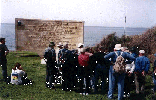 During June, Hamilton ordered three attacks to Turkish line at Capa
Helles (Sebdulbahir) (infront of the penisula) on June 4, 21, and 28. Both
sides lost many lives but got nothing. This was the end of Hamilton's dreams
at Sebdulbahir landing. These failures caused consideration of third landing
at Sulva bay.
Hamilton realized that as far as Turks control the hill, they would
not be succesful. The plan was attacking and occupying the two strategical
hills : "Kirich tepe" (Kirectepe) and "Tekke Tepe"(Teke Tepe) and joining
to ANZAK trops and reaching to Chunuk Bair (Conbayir) then take" Kocacimen
Tepe" at Anzak Cove (Ariburnu) after following landings at Sulva Bay. The
landing started on August 5. At the beginning, they got successfull and
occupied Kirectepe in spite of strong defense of Turks. But they weren't
quick enough to change the destiny of the war at that moment, but they
were still superior. Some of the trops reached the Chunk Bair and they
were so close to occupy Chunk Bair. Additional Turkish trops were immediatly
sent to the Sulva front and Chunk Bair but there were disorders among trops.
This reinforcement stoped the enemy advance in Chunk Bair, but situation
was very critical. This was the moment to take responsibility for Mustafa
Kemal (the heart of Turkish defense). When L.V. Senders asked for his oppinion
; He relied "A unified command" and added "The only solution is to give
all the trops under my command". "Won't that be too many" asked Liman.
His answer was quick and finally "It will be too few". Limon Van Sander
assigned Mustafa Kemal as a group commander of Anafartalar.
There was no time to wait for reinforcement. it was crucial to stop
the enemy advance (move forward). On August 10, there was an hour to sunset,
Turkish trops already took place to attack. Mustafa Kemal was infront of
their trops, time was critical. If enemy naval bombartments start, the
attack can turn to mascare for Turks. With his order, Turkish attack was
started in the quiteness of the dark. After a second, there was shouting
at the emeny trenches nothing else more. First trences were already occupied
and the attack was continued down from hills driving the enemy back (known
as First Anafarta Victory). "Kirectepe" was taken back after several counter
attacks. With the sunset naval bombartment has started but it was imposible
to determine exact targets, because all trops were already mixed and fighting
then bombardment was stopped. The last Alied attempts were broken at Second
Anafarta fights on 16-21 August 1915 and ended with "Kayacik Agili" fight
on August 27, 1915. Now there was no way for Hamilton to reach Istanbul.
It was the end for allied forces and Istanbul became a dream.
The trops were evacuated from Sulva and Ariburnu (Anzak Cove) fronts
on December 19-20, 1915. They left "Sebdul Bayir" fronts without any lost
on September 9, 1915. It seemed like it was their succsess ,but infact it
was wrong decision which was made by Turks not to fight back during their
evacuation.Our next generation will always remember those unknown heros
with their incredible epics.
This great victory can not be introduced in one web-site...
During June, Hamilton ordered three attacks to Turkish line at Capa
Helles (Sebdulbahir) (infront of the penisula) on June 4, 21, and 28. Both
sides lost many lives but got nothing. This was the end of Hamilton's dreams
at Sebdulbahir landing. These failures caused consideration of third landing
at Sulva bay.
Hamilton realized that as far as Turks control the hill, they would
not be succesful. The plan was attacking and occupying the two strategical
hills : "Kirich tepe" (Kirectepe) and "Tekke Tepe"(Teke Tepe) and joining
to ANZAK trops and reaching to Chunuk Bair (Conbayir) then take" Kocacimen
Tepe" at Anzak Cove (Ariburnu) after following landings at Sulva Bay. The
landing started on August 5. At the beginning, they got successfull and
occupied Kirectepe in spite of strong defense of Turks. But they weren't
quick enough to change the destiny of the war at that moment, but they
were still superior. Some of the trops reached the Chunk Bair and they
were so close to occupy Chunk Bair. Additional Turkish trops were immediatly
sent to the Sulva front and Chunk Bair but there were disorders among trops.
This reinforcement stoped the enemy advance in Chunk Bair, but situation
was very critical. This was the moment to take responsibility for Mustafa
Kemal (the heart of Turkish defense). When L.V. Senders asked for his oppinion
; He relied "A unified command" and added "The only solution is to give
all the trops under my command". "Won't that be too many" asked Liman.
His answer was quick and finally "It will be too few". Limon Van Sander
assigned Mustafa Kemal as a group commander of Anafartalar.
There was no time to wait for reinforcement. it was crucial to stop
the enemy advance (move forward). On August 10, there was an hour to sunset,
Turkish trops already took place to attack. Mustafa Kemal was infront of
their trops, time was critical. If enemy naval bombartments start, the
attack can turn to mascare for Turks. With his order, Turkish attack was
started in the quiteness of the dark. After a second, there was shouting
at the emeny trenches nothing else more. First trences were already occupied
and the attack was continued down from hills driving the enemy back (known
as First Anafarta Victory). "Kirectepe" was taken back after several counter
attacks. With the sunset naval bombartment has started but it was imposible
to determine exact targets, because all trops were already mixed and fighting
then bombardment was stopped. The last Alied attempts were broken at Second
Anafarta fights on 16-21 August 1915 and ended with "Kayacik Agili" fight
on August 27, 1915. Now there was no way for Hamilton to reach Istanbul.
It was the end for allied forces and Istanbul became a dream.
The trops were evacuated from Sulva and Ariburnu (Anzak Cove) fronts
on December 19-20, 1915. They left "Sebdul Bayir" fronts without any lost
on September 9, 1915. It seemed like it was their succsess ,but infact it
was wrong decision which was made by Turks not to fight back during their
evacuation.Our next generation will always remember those unknown heros
with their incredible epics.
This great victory can not be introduced in one web-site...
 Click here for the "Turkish War Academy"...
Click here for the "Turkish War Academy"...

















 Click here for the "Turkish War Academy"...
Click here for the "Turkish War Academy"...



